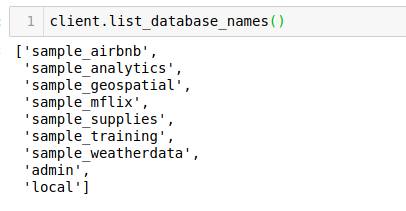insert_one function can be used to insert one document at a time in MongoDB. We will first create a dictionary and then insert it into the MongoDB database:
post = {"_id": 'qwertyui123456',
'username': 'someone',
'name':'Gyan',
'address':'Somewhere in India'}
post_id = table.insert_one(post).inserted_id
post_id
Output: qwertyui123456
MongoDB is an unstructured database so it is not necessary that all the documents in a collection will follow the same structure. For example, the dictionary we inserted in the above case does not contain a few of the fields we have seen in the MongoDB document we fetched earlier.
.inserted_id provides the _id field assigned by default if it has not been provided in the dictionary. In our case, we have explicitly provided this field. Finally, the operation returns the _id of the inserted MongoDB document. It is stored in the post_id variable in the above case.
So far, we had to insert only one document in the MongoDB collection. What should we do if we have to insert thousands of documents at once? Will you run insert_one in a loop? Not at all!
We have the insert_many function for this:
import datetime
new_posts = [{"name": "Mike",
"username": "latestpost!",
"date": datetime.datetime(2009, 11, 12, 11, 14)},
{"name": "Eliot",
"title": "onceAgain",
"text": "and pretty easy too!",
"date": datetime.datetime(2009, 11, 10, 10, 45)}]
final = table.insert_many(new_posts)
final.inserted_ids


